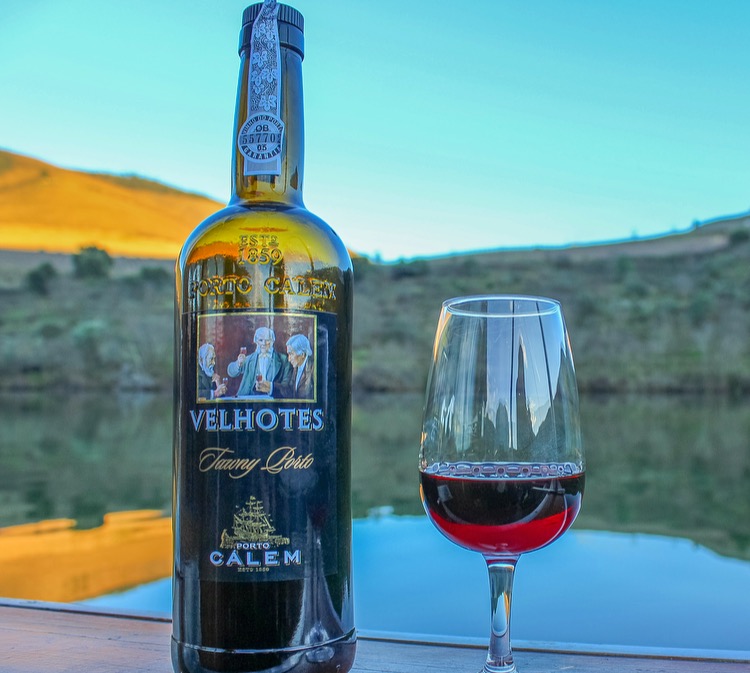
Some may be surprised by the fact that Portugal’s most famous wine is not actually produced in the city where it derives its name from. The magic of this precious liquid actually begins about 200 miles east in the Douro Valley.

The Douro Valley is 70 miles of hillside-clinging vineyards shaped by the mighty Douro River. Forging its way into the rugged mountainside of Northern Portugal, the river creates a diverse region of twists and turns. This major water supply is crucial especially during hot summers when the temperatures can climb into the hundred-teens. Between the merciless heat and steep valley walls, the Douro region is certainly a brutal environment for grape growing, making the final product all the more special.
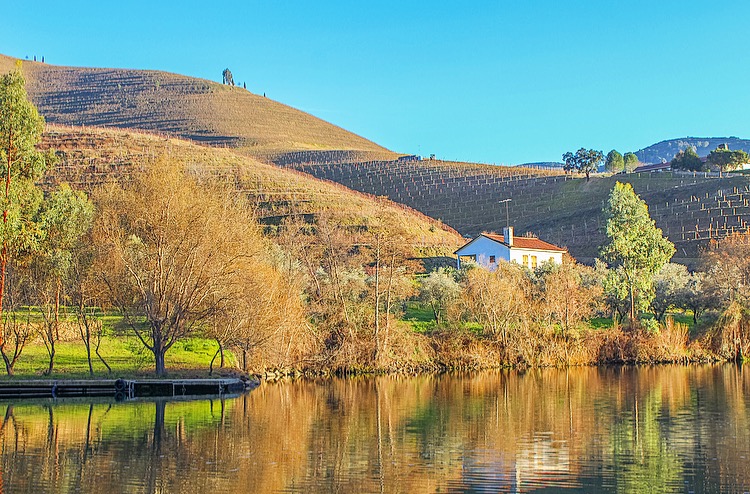
By my side on last week’s wine adventure were four girls: 2 French, one Italian, and a Spaniard. We all study at the Bordeaux International Wine Institute together and consider ourselves certified wine geeks. Even still, neither of us were prepared for the spellbinding splendor that is the Douro Valley.

Eager for an authentically local experience, the girls and I booked a private tour through Go Local Tours, which I highly recommend if you are traveling in the area. We were greeted by a smiling Portuguese guide by the name of Zeca, who was just a delight all day. The six of us departed from Porto following the river inland and stopping for photos and wine along the way.
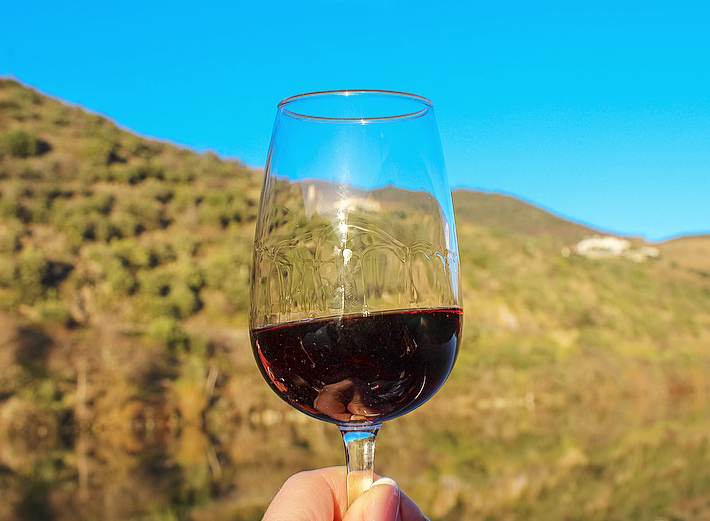
The roads leading to the heart of the valley are certainly not a leisure to drive. They poke from the hillsides and swing sharply around bends. But, you cannot beat the view. Even though we were a week into the New Year, the hills were persistently green, soaking up the distant yet warm January sun.

After stopping not once, not twice, but three times for delicious Portuguese food and pastries, we finally made it to the bottom of the valley by mid-afternoon. We were led to a private shallow-bottomed boat called a barco rabelo, historically known for transporting barrels of Port from the Douro to the coastal city of Porto. We were each handed a blanket and glass of Port to keep us warm as we departed for a ride on the Douro River.
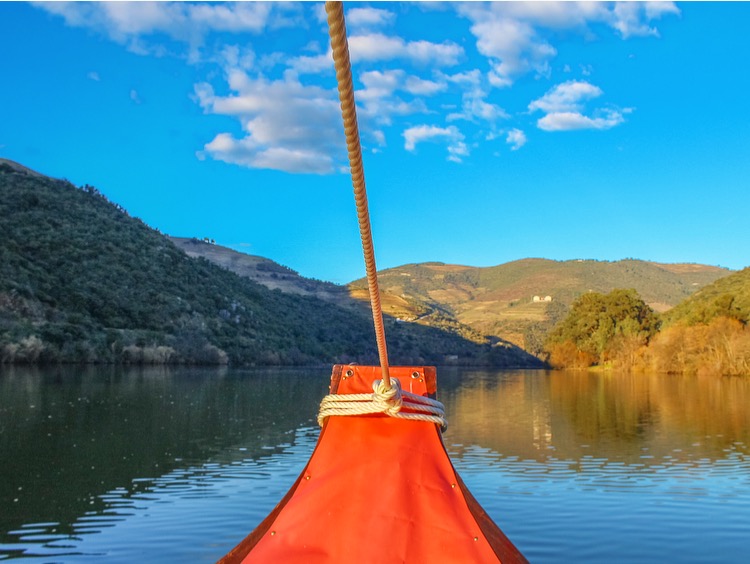
The sun was playing hide and seek with us as we glided along. The panoramic views from above were amazing, but the boat provided a closer look to the terraced vineyards cascading down the valley walls. The terraces, you begin to notice, are narrower than they first appear. All hand-made and perfectly cut into the rocky banks, again a testament to the strong-willed workers who shaped this famous region.
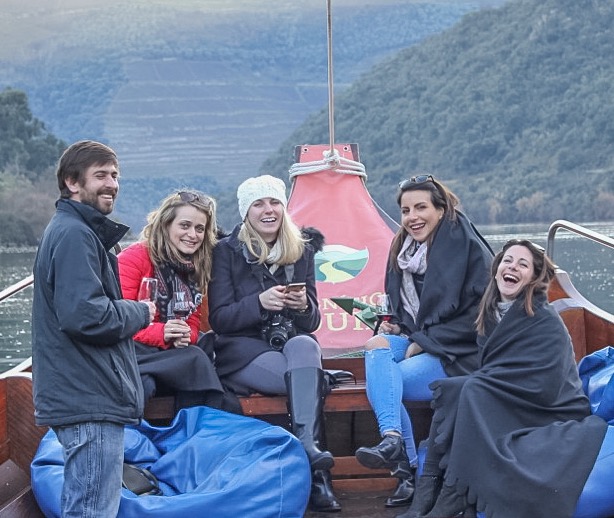 A Bottle of Port, many photos, and a million laughs later, the girls and I arrived back to the dock where Zeca led us to our final tasting of the day. A short two minute drive up a hill led us to the whitewashed, red-roofed Quinta do Bomfim, a quintessential Port wine estate sitting along the Douro River.
A Bottle of Port, many photos, and a million laughs later, the girls and I arrived back to the dock where Zeca led us to our final tasting of the day. A short two minute drive up a hill led us to the whitewashed, red-roofed Quinta do Bomfim, a quintessential Port wine estate sitting along the Douro River.
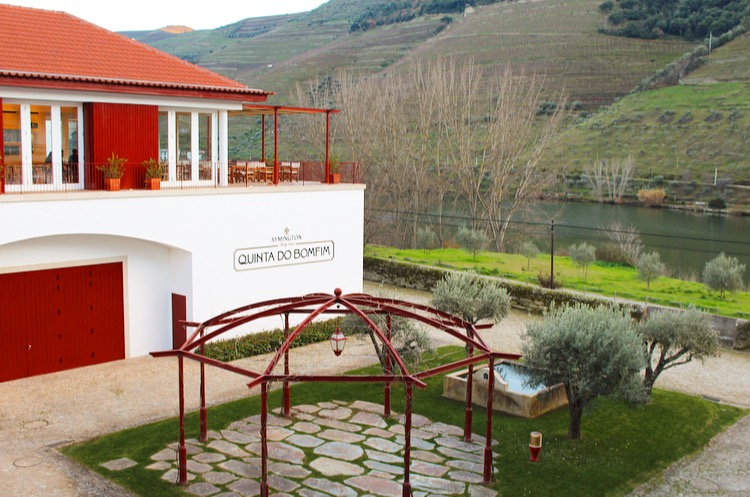
As dusk fell, our small group was led into the newly renovated lagar winery where our guide discussed the process of grape treading in the Douro. Amazingly, some grapes are still stomped by human foot in this wonderfully traditional area of the world. We were told lively anecdotes of workers dancing in the violet grape crush into the wee hours of the morning, something I must come back to do some day.
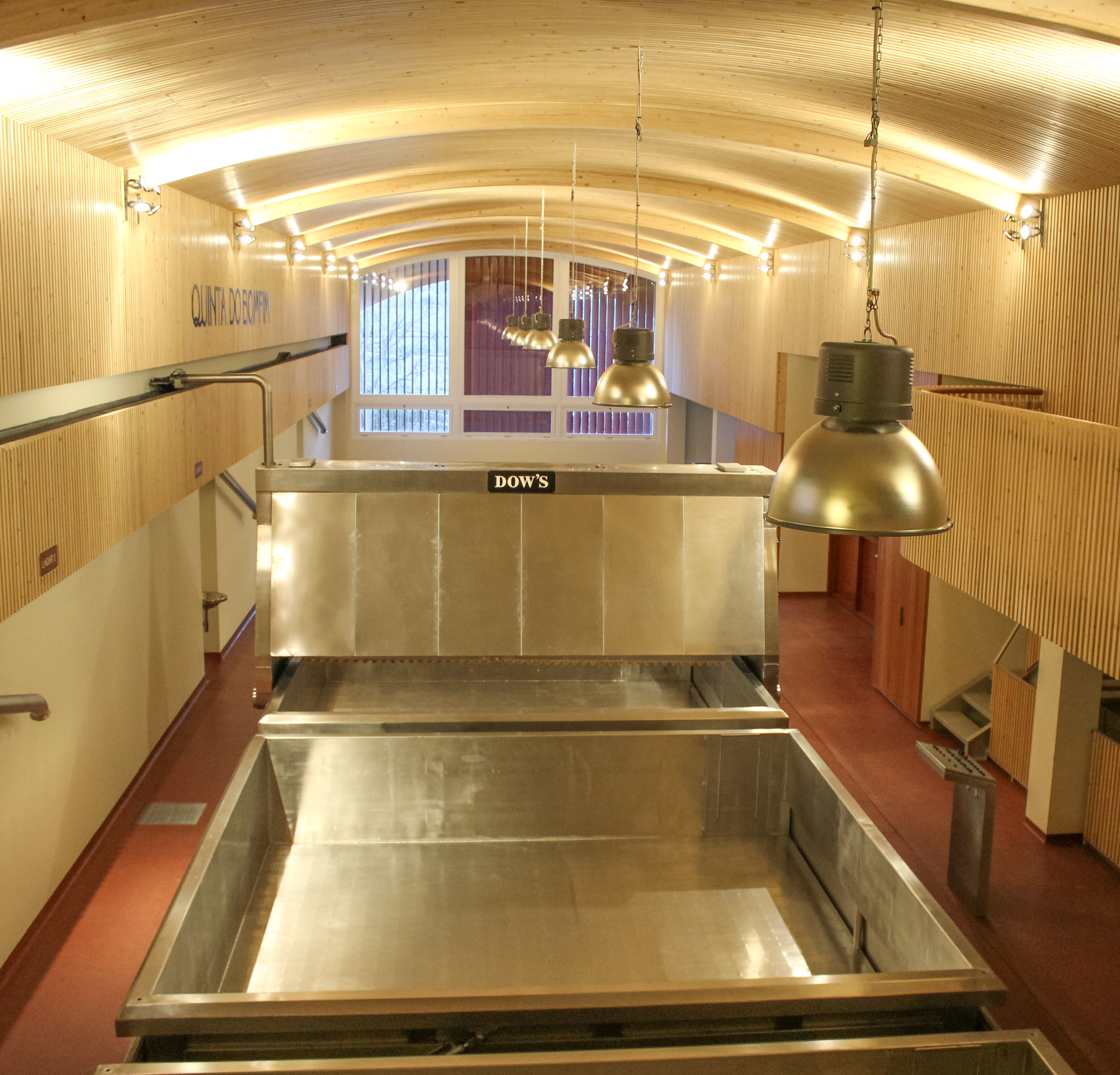
While this method will always be a part of the winemaking culture of the Douro, the region is also grateful for the invention of “robotic lagars,” which first appeared for the 2000 harvest. These stainless-steel troughs use mechanized “feet” that recreate the movement of human beings to gently crush the grape skins. Requiring half the time and effort, these machines have had a profound impact on the Port winemaking process.
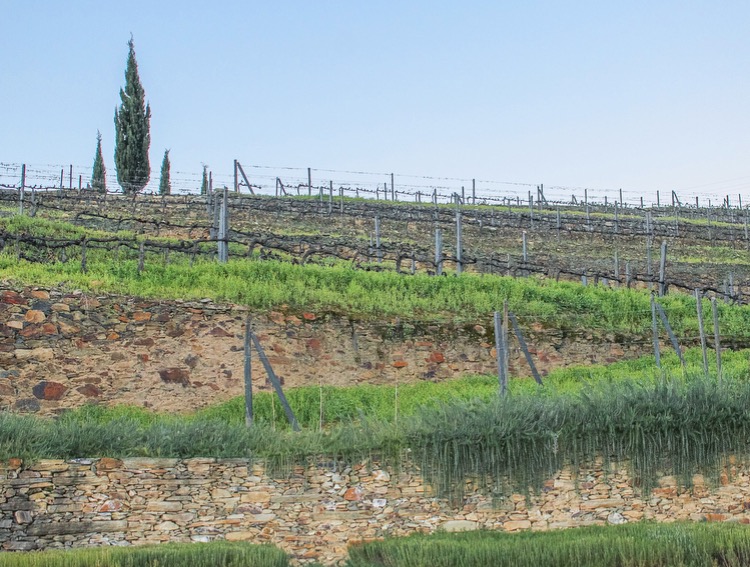
Back outside, we were given a passing glimpse of a Douro vineyard up close. Angular and steep, the terrace walls are arranged like a maze into the hillside. The green grass and shrubbery lining the rows of vines gave me hope that spring will soon be here. Although no grapes are growing quite yet, I can’t imagine they are far from bud break, just a few more months to go.
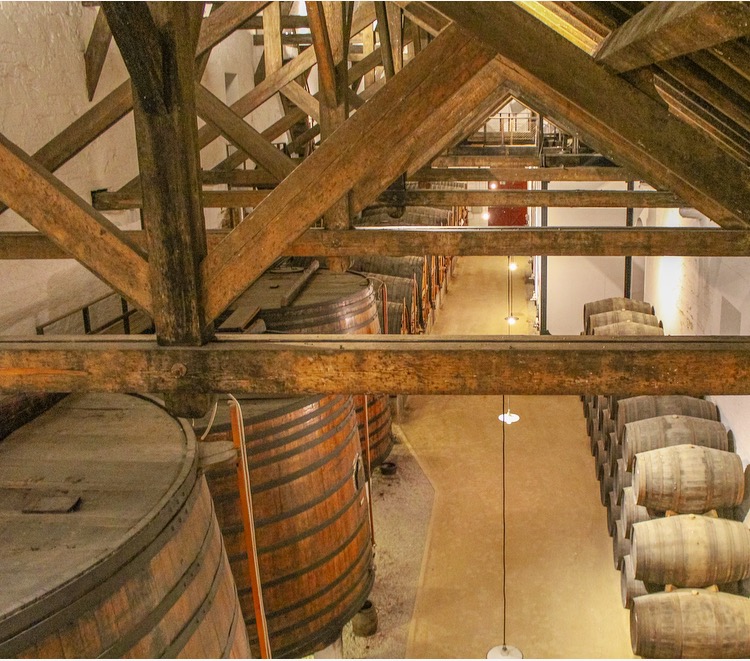
In a separate building, we found the estate’s old wine cellar, home to a dozen or so oak barrels that are essential to the maturation and aging of their Port wine. The aging process is actually a vital step when producing Port wines. More often than not, it’s the time spent in a barrel or in a bottle than gives this unique drink its complexity and finesse.
Depending on its style, Port is aged differently. For instance, an aged Tawny Port spends up to a decade in oak and is exposed to air through the porous wood. These wines are lighter in color, and exhibit caramelized, nutty flavors that is too exquisite for words. On the other hand, Vintage Ports are deeper in color with a distinctive red fruit flavor. They have been aged in a bottle for sometimes up to half a century or more, and come with a heftier price tag because of it.
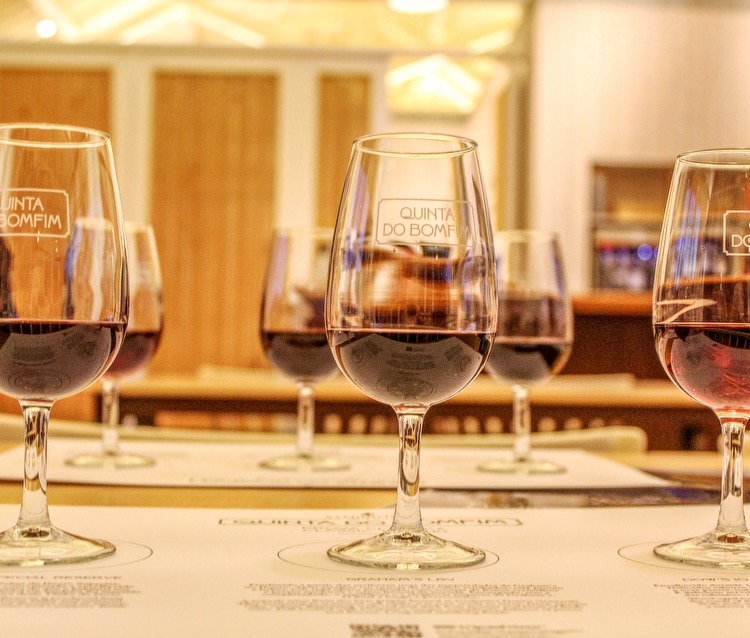
In perfect fashion, we ended our AMAZING day with a stellar lineup of Ports, ranging from a Special Reserve and Late Bottle Vintage (LBV) to a 10 Year Old Tawny. Accompanying our decadent wines was a Pastel de Nata, a traditional Portuguese pastry made exclusively from egg yolks and sugar.

Full from indulging on wine and goodies all day, the girls and I were a little sleepy on our 2 hour drive back to our home base in Porto. Sleep was much needed and very welcomed as we had a whole new day of adventures awaiting us in the morning. And the wine travels continue…
Wonderful post and photos of the Douro valley!
Thank you for reading! Stay tuned for more on my trip to Porto!
We look forward to reading your post!